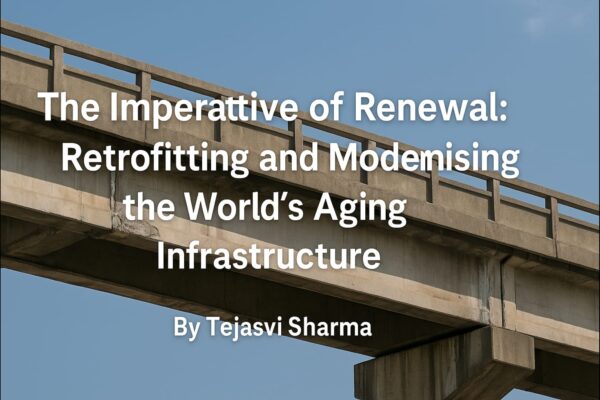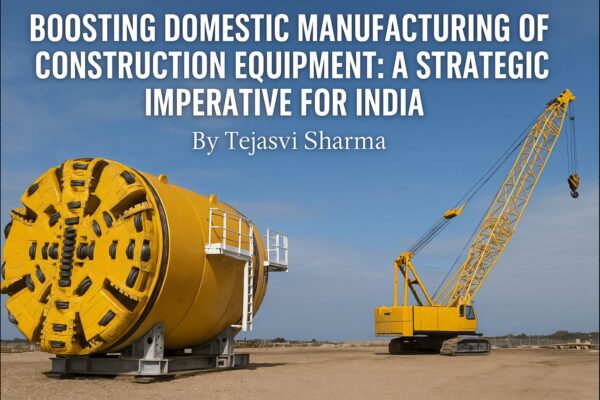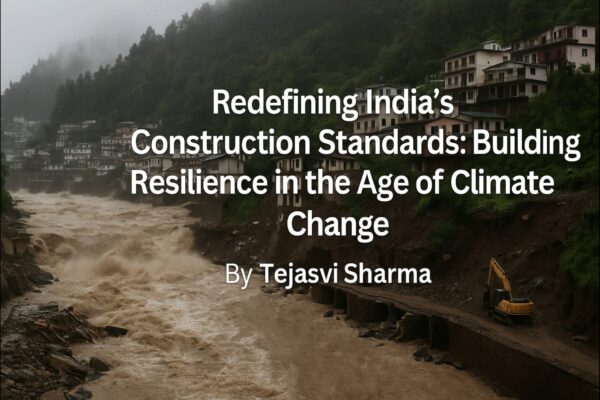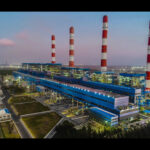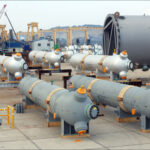Rewriting the atomic script: How India’s Nuclear Energy expansion & new regulations could transform its energy future
by Tejasvi Sharma, Editor-in-Chief, EPC World
In a decisive break from decades of policy orthodoxy, India is rewriting the rules of its nuclear energy sector. For the first time in the nation’s atomic history, private domestic companies—and foreign entities as minority stakeholders—will be permitted to mine, import, and process uranium. This regulatory shift shatters a long-standing state monopoly and signals a strategic pivot toward accelerating nuclear energy deployment as part of India’s clean energy transition.
The policy change is not an isolated reform; it is part of an ambitious plan to increase nuclear power generation capacity twelvefold by 2047, ensuring that nuclear energy contributes at least 5% of India’s total electricity supply. Coupled with international regulatory cooperation and a fresh push for small modular reactors (SMRs), this moment marks a potential inflection point for India’s atomic ambitions.
From state monopoly to market openness: The Uranium revolution
For decades, uranium exploration, mining, and processing in India have been the exclusive domain of state-owned enterprises, primarily the Uranium Corporation of India (UCIL) and the Nuclear Power Corporation of India (NPCIL). While this arrangement ensured tight state control over strategic resources, it also constrained supply growth, delayed project execution, and created dependency on imports from a limited pool of international suppliers.
The new framework fundamentally alters this landscape. Private sector participation in uranium mining and processing will inject competition, attract capital, and accelerate the development of domestic reserves. More importantly, the decision to allow foreign firms as minority partners in joint ventures opens the door to advanced mining technologies, best practices in environmental management, and diversified sourcing strategies.
For an energy-hungry economy, this is more than a structural reform—it is a resource security imperative. By expanding uranium availability, India can ensure fuel security for its nuclear reactors, reduce reliance on volatile global supply chains, and maintain strategic autonomy in its clean energy roadmap.
The 2047 vision: Scaling nuclear energy to 5% of the mix
India’s current nuclear capacity—hovering around 7 GW—accounts for less than 3% of its total electricity generation. The government’s vision is to push this figure up dramatically, with a twelvefold capacity expansion over the next two decades. By 2047, India aims to have between 80–85 GW of installed nuclear capacity, a target that will require unprecedented levels of investment, regulatory efficiency, and technological deployment.
This growth will not come solely from conventional large-scale reactors. The nuclear expansion blueprint incorporates:
- Pressurised Heavy Water Reactors (PHWRs) for baseline baseload supply.
- Light Water Reactors (LWRs) in partnership with global technology providers.
- Fast Breeder Reactors (FBRs) for fuel cycle efficiency.
- Small Modular Reactors (SMRs) for industrial and remote area deployment.
By diversifying its nuclear technology portfolio, India intends to balance grid stability with flexibility, enabling nuclear power to complement the country’s rapidly expanding solar and wind capacity.
SMRs: The next big leap in Indian nuclear technology
A key highlight of India’s new nuclear push is its active solicitation of proposals for 220 MWe Small Modular Reactors—compact, factory-fabricated units that can be deployed faster and with lower upfront costs than traditional reactors.
The advantages of SMRs are substantial:
- Modularity allows phased deployment and scaling based on demand.
- Enhanced safety through passive cooling systems and reduced accident risk.
- Industrial decarbonization by providing clean, reliable heat and power for sectors like steel, cement, and chemicals.
- Remote deployment capability, enabling nuclear power in regions with limited grid infrastructure.
For India, SMRs could become a critical bridge technology in achieving its net-zero 2070 target, enabling flexible, distributed nuclear generation that complements intermittent renewables.
Strengthening the regulatory framework: India–US collaboration
The nuclear sector is uniquely sensitive, both in terms of safety and geopolitics. Recognizing this, India has moved to deepen international regulatory cooperation. From August 6–8, 2025, the Atomic Energy Regulatory Board (AERB) of India and the U.S. Nuclear Regulatory Commission (NRC) held high-level talks to advance collaboration on:
- Nuclear safety standards for current and next-generation reactors.
- Licensing pathways for advanced nuclear technology.
- Technical exchange on small modular reactor design and certification.
- Cybersecurity protocols for digital control systems in nuclear plants.
This cooperation is not merely diplomatic; it addresses the technical bottlenecks that often slow down nuclear projects, ensuring India can rapidly adopt proven, globally benchmarked safety and regulatory practices.
Economic, environmental, and strategic implications
Economic boost
Opening uranium mining to private and foreign investment will unlock billions in capital expenditure, stimulate ancillary industries such as equipment manufacturing and logistics, and create high-skilled jobs in engineering, geology, and safety operations.
Environmental gains
Nuclear power offers zero direct carbon emissions during operation, making it an indispensable component of India’s climate action strategy. The expanded use of SMRs and advanced reactors could replace coal in industrial processes, significantly reducing air pollution and greenhouse gas emissions.
Strategic leverage
By strengthening its domestic uranium supply and diversifying reactor technology, India enhances its energy sovereignty and positions itself as a serious player in the global nuclear marketplace—potentially even exporting SMR designs or services to energy-deficient nations in Asia and Africa.
Challenges on the road to 2047
While the regulatory opening is historic, the road ahead is not without obstacles:
- Public Perception & Safety Concerns: High-profile nuclear accidents globally have left lingering fears among the public. Effective stakeholder communication and community engagement will be vital.
- Waste Management: Scaling up nuclear capacity requires robust radioactive waste handling and disposal infrastructure.
- Capital Intensity: Nuclear projects demand long-term financing at competitive rates. India will need to attract patient capital through clear policy signals and de-risking mechanisms.
- Technology Transfer & IP: Collaborating with foreign partners will require carefully negotiated agreements to ensure technology access without compromising national security.
Policy signals for industry players
For EPC contractors, technology providers, and investors, the current moment offers unprecedented opportunity:
- Private mining licences could trigger a rush for exploration in uranium-rich belts like Jharkhand, Meghalaya, Andhra Pradesh, and Rajasthan.
- Joint ventures with global uranium suppliers could diversify India’s supply chain.
- SMR manufacturing has the potential to become a sunrise industry, with domestic fabrication hubs serving both Indian and export markets.
- Advanced reactor retrofits for industrial plants could open new decarbonization pathways beyond the power sector.
Conclusion: A controlled chain reaction for clean energy
India’s nuclear energy expansion is not a sudden spark—it is a carefully controlled chain reaction, set into motion by regulatory liberalization, international cooperation, and technological diversification. By dismantling the state monopoly on uranium mining, embracing small modular reactors, and aligning safety protocols with global best practices, India is placing nuclear power at the heart of its energy security and decarbonization strategy.
If executed with precision, transparency, and public trust, the nuclear sector could shift from being a marginal contributor to becoming a central pillar of India’s clean energy future—helping the country meet its 500 GW non-fossil capacity target by 2030, its net-zero goal by 2070, and its industrial competitiveness aspirations in an increasingly decarbonized global economy.
Tags





